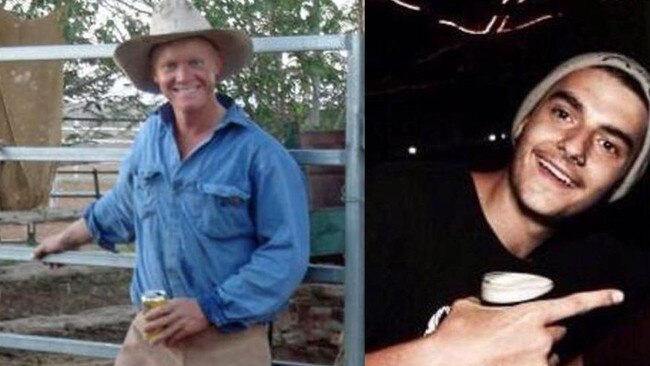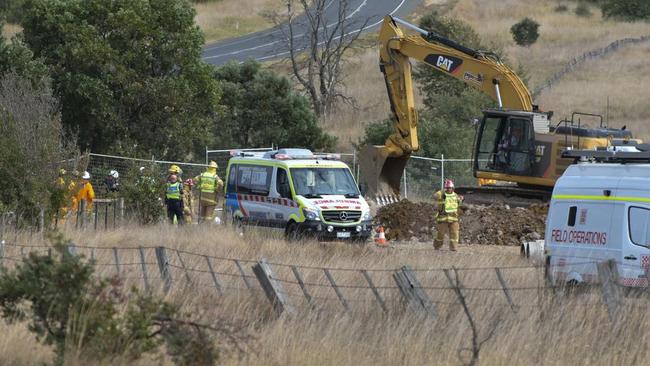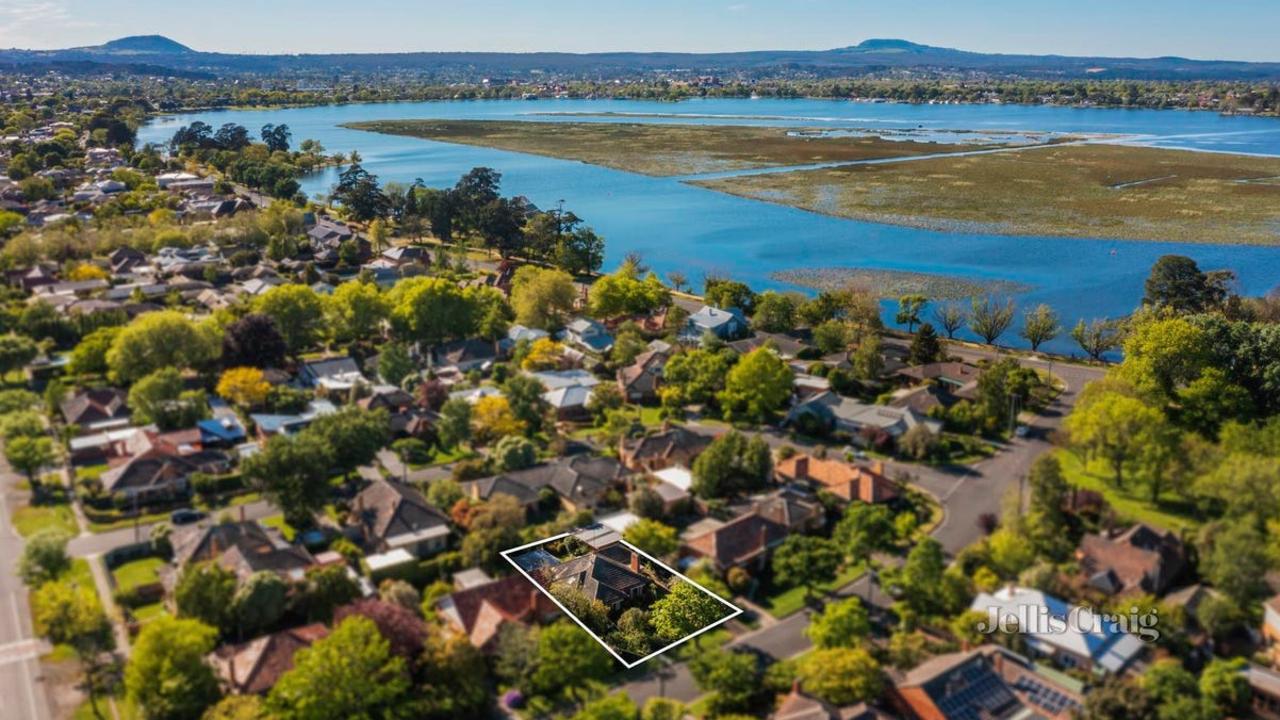‘Body recovery rather than rescue’: Trench rescue resources still lacking despite deadly incident
Two men died when a trench they were working in collapsed in 2018. But much of regional Victoria remains without rescue capability to this day.

Ballarat
Don't miss out on the headlines from Ballarat. Followed categories will be added to My News.
Longstanding resource and logistic problems within Victorian firefighting organisations, which were raised several times with the state government, “set the stage” for the fatal trench collapse in Ballarat four years ago and have improved little since.
Charlie Howkins, 34, and Jack Brownlee, 21, died when a trench they were working in collapsed in March 2018.
The three vehicles in Victoria capable of helping during trench rescues are in Richmond, Warrnambool, and Wangaratta; those from Richmond and Warrnambool responded to the accident.
Mr Howkins died from head injuries at the scene and it took rescuers more than two hours to free Mr Brownlee from the six-metre-deep trench, who died of injuries including metabolic derangement and multiple organ failure the following day.
Workplace manslaughter laws were introduced and Ballarat construction company Pipecon was fined in the wake of the disaster.
But the United Firefighters Union had told the Napthine Government in 2014 and the Andrews Government immediately after the deaths about a lack of trench rescue resources and a “clear interoperability failure” between the Country Fire Authority and the Metropolitan Fire Brigade that, if resolved, would have “better placed” emergency services to respond to the deadly incident.
Though Ballarat does have a technical rescue vehicle and other trucks and equipment, it remains without trench rescue capability to this day.
“What is the capability from Ballarat to Mildura?” United Firefighters Union national secretary Peter Marshall said on Tuesday.
“There’s nothing.”

State Government reforms put Fire Rescue Victoria in charge of managing the state’s trench rescue capabilities in July 2020.
Though FRV does work with other organisations during an emergency, it has 11 trench-rescue-qualified firefighters of its own at Ballarat’s two stations.
An FRV spokeswoman said the organisation was always looking to improve.
“Ballarat is classified as a technical rescue station, which means there are specialist staff and rescue equipment on site for use when needed,” she said.
“We’re always looking at how we can enhance our rescue capabilities, and work seamlessly with our sector partners, including Victoria Police, in emergency situations.
“This work includes reviewing service delivery models, appliance types, and the strategic location of resources.”
But a senior firefighter who wished to go unnamed said having trained staff without the necessary support vehicles was “like having pilots somewhere without a plane”.
He said there was in fact a transporter and container pod yet to be deployed because of uncertainty about where it should go and because of staffing problems.
The equipment, he said, would “go a long way to being able to plug some holes in capability, but it’s not going to be a complete answer”.
Mr Marshall, the union secretary, said the UFU was seeking a coronial inquest into the 2018 Ballarat trench deaths where it could raise the issues.
“Essentially there’s lots of urbanised areas going up Ballarat way, even up Mildura, there’s new suburbs popping up,” he said.
“Every time they [workers] go into a trench, if something goes wrong, there’s no response.
“You’re talking about body recovery rather than a rescue.”
He said if the union’s pleas had been heeded, emergency services would have been “better placed” to respond to the fatal Ballarat event.
“As to what the outcome would be, no one will ever know that,” Mr Marshall said.
“But the problem existed in 2014 and is still there in 2022.”

In July 2014, a health and safety representative issued the Ballarat City CFA an improvement notice, later affirmed by WorkSafe, that the brigade’s training was insufficient for trench rescues.
The UFU said in response, the CFA removed itself entirely from the rescue role rather than rectify the training deficiency, leaving the Metropolitan Fire Brigade to pick up the slack for trench rescue call-outs as distant as Victoria’s borders.
Mr Marshall wrote to Mr Napthine that same month about the Ballarat situation, as well as other apparent instances of poor communication between the CFA and MFB.
The premier’s secretary, Northern Metropolitan MP Craig Ondarchie, replied to Mr Marshall, saying Rowville MP Kim Wells would provide him with more detail about “operational readiness and trench rescue response resources”.
The Andrews-led Labor Party took power from Mr Napthine’s Liberal Party four months later.
Nearly four years passed.
The day after the deaths of Mr Brownlee and Mr Howkins in Ballarat, Mr Marshall wrote to now-Deputy Premier James Merlino, who was the Emergency Services Minister at the time.
He said the deadly incident “highlighted the dire need for trench rescue capability in the area”.
“That incident could have been more effectively and efficiently managed with [a] planned and appropriately-resourced response had the CFA not removed trench rescue capability from Ballarat City in 2014,” Mr Marshall wrote, adding the CFA’s actions “set the scene for yesterday’s fatal event”.
“This untenable situation cannot be allowed to continue,” he said, asking that a technical rescue pod and transporter be urgently allocated to Ballarat City.
In 2019, the union briefed the Department of Justice and Community Safety in the same fashion.
In response to questions for Mr Merlino, a state government spokeswoman said the government was committed to fire rescue reform, but did not say what, if anything, had been done materially about Mr Marshall’s equipment requests or suggestion that Ballarat’s trench rescue capabilities be revived, or whether the Labor Party was aware of those requests before the Ballarat deaths.
The CFA was asked about the 2014 improvement notice and how it responded.
Liberal MPs Kim Wells and Craig Ondarchie were contacted about whether they answered Mr Marshall in greater detail or relayed his concerns to the incoming Labor government.




